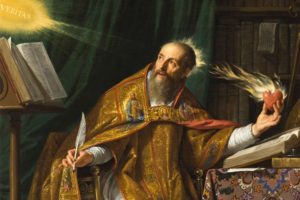In observance of 500-year anniversary of the Reformation, many pastors will dedicate October to preaching The Five Solas (there are five Sundays in October). Yesterday I had the privilege of gathering with a group of such pastors to discuss the series. Following is my contribution: the historical background of the Solas, their particular meaning, and a few suggestions for preachers.
Simply put, The Five Solas constitute the gospel legacy of the Reformation. With the primacy of Scripture as God’s supreme authority, and the early church as a model, Protestant Reformers jettisoned universal papal authority and, at varying degrees, spurned traditional beliefs and customs that had grown up in medieval Catholicism (e.g., monastic vows, pilgrimages, veneration of the saints, indulgences). They sought to reestablish the essence and organization of the church to bring it in line with Scripture. They generally reduced the number of sacraments from the traditional seven to only two: baptism and the Lord’s Supper.
Communicating the Bible to laypeople was also a priority. While opinions varied on style of worship (e.g., the role of images, aesthetics, and music), there was widespread agreement on the need for lay participation and services that employed the vernacular (common) language. Finally, in breaking with their medieval past, the Reformers also forged a specific understanding of the doctrine of salvation. They distinguished between justification and sanctification, declaring the former to be a legal declaration of innocence based on the imputed righteousness of Christ. This distinctly Protestant understanding of justification transformed the experience of salvation then as it does now. The Five Solas are a helpful way to summarize this legacy.
- Sola Scriptura (“Scripture alone”): The Bible alone is our supreme source of authority. It is God’s word, speaking to us in a manner that is fully authoritative, sufficient, and altogether reliable. On account of divine inspiration (2 Tim 3:16-17), Scripture is the first-order authority, arbitrating every second-order authority, that is, natural law, the conclusions of particular theologians, and/or interpretations of the church institution (i.e. a magisterium).
- Solus Christus (“Christ alone”): Jesus Christ alone is our Lord, Savior, and King. He is our covenantal head—the Son of Man who represents us to the Father—and he is the penal substitute, that is, the one true Savior who has redeemed us by his blood (1 Tim 2:5-6). We appropriately find inspiration in the lives of various Christian men and women (e.g., Mary and the Saints), and the church holds us accountable to walk worthy of our calling, but we look to Christ alone as the mediator through whom God has accomplished salvation.
- Sola Fide (“faith alone”): We are justified (accepted by God) only through faith in Jesus Christ. Based on Luther’s 1521 translation of Romans 3:28, “That a person be justified… by faith alone” this phrase expresses the conviction that justification is received by opening empty hands of faith to receive the divine gift of acceptance. Through this means, sinners receive the imputed righteousness of Christ, and on this basis alone become children of God. Human works do not secure such favor in God’s sight, so that no person can boast.
- Sola Gratia (“grace alone”): We are saved by the grace of God alone. From start to finish, our salvation is predicated on sovereign grace. In keeping with Augustine’s emphasis on divine initiative in election and justification, “grace alone” foregrounds the reality that God has loved us from before the beginning of time, predestined our salvation, and orchestrated its accomplishment in concert with the Son and the Holy Spirit. Unlike Augustine, however, the Reformers insisted that such grace excludes human merit. Grace alone saves.
- Soli Deo Gloria (“to the glory of God alone”): It is how we’re called to live. This catchphrase conveys the heartbeat and intended outcome of the other four solas. It highlights the God-centered nature of Christian faith—that men and women in Christ live not by their own authority (according to their autonomous free will) or for their own purposes (for selfish gain in a consumerist culture), but rather for the exaltation of God alone. While this specific nomenclature was not commonly used in the early Reformation, it reflects the value of the period, which sought to uphold God as the one valid object of devotion over Mary, the Saints, and/or various sacramental practices.
Suggestions for preaching The Five Solas:
- Don’t simply equate contemporary Catholicism with Roman faith of the sixteenth century. It’s true that Catholic dogma doesn’t change, and the conclusions of Trent remain binding, but don’t assume that the church of Rome says things today in precisely the same way it did then (while doctrine doesn’t change, it develops). Take time to consult the Catholic Catechism (a searchable online version is available <<here>>) to confirm that your description of contemporary Catholic teaching is accurate.
- Recognize that our Protestant tradition runs aground on many of the above-mentioned concerns. For example, don’t hesitate calling out the consumerism or anthropocentric focus of our own tradition, or other such transgressions, where it exists.
- Remember, pastors, the tone with which you speak to your congregation will be replicated in countless dinner conversations between your congregants and their Catholic family and loved ones. Therefore, speak the truth in love.





